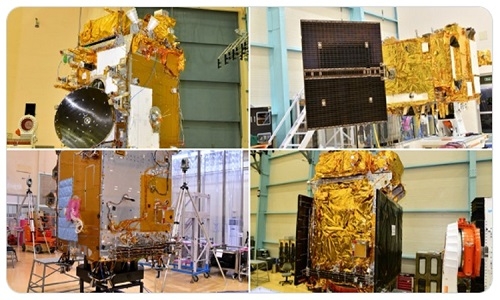‘Designed, assembled Aditya-L1’s payload that will study solar corona’
31 Aug 2023 11:02:24

BENGALURU,
THE Indian Institute of Astrophysics (IIA) on Wednesday said it has designed, assembled, and tested the Visible Emission Line Coronagraph (VELC), one of the seven payloads of India’s first dedicated scientific mission Aditya-L1 conceived to study the sun. The ISRO is set to launch Aditya-L1 from Sriharikota in Andhra Pradesh on September 2.
The IIA said the VELC was developed in close collaboration with the ISRO. “IIA had to build India’s first large sized ‘Class to Clean Rooms’ at (sic) its CREST campus in Hosakote to assemble VELC,” IIA said in a statement. The satellite carries six other payloads — Solar Ultraviolet Imaging Telescope (SUIT), Aditya Solar Wind Particle Experiment (ASPEX), Plasma Analyser Package for Aditya (PAPA), SoLEXS-Solar Low Energy X-ray Spectrometer (SoLEXS), High Energy L1 Orbiting X-ray Spectrometer HEL1OS, and Magnetometer with enhanced science scope and objectives possible by extensive remote and in-situ observation of the Sun.
“Earlier, this mission was conceived as Aditya-1 with a 400 kg class satellite carrying one payload, the Visible Emission Line Coronagraph (VELC), and was planned to be launched in an 800 km low earth orbit,” the IIA said. A satellite placed in the halo orbit around the first Lagrangian point (L1) of the Sun-Earth system has the major advantage of continuously viewing the Sun without any occultation/eclipses, the IIA said. Therefore, the Aditya-1 mission has now been revised to “Aditya-L1 mission” and will be inserted in a halo orbit around the L1, which is 1.5 million km from the earth towards the Sun, it explained.
“The VELC payload on-board Aditya-L1 is an internally occulted solar coronagraph with simultaneous imaging, spectroscopy and spectro-polarimetry channels close to the solar limb. VELC is designed to image solar corona,” IIA said. Both imaging and spectroscopic observations obtained by VELC payload are key to study the diagnostic parameters of solar corona and dynamics as well as origin of the coronal mass ejections and magnetic field measurements of the solar corona.